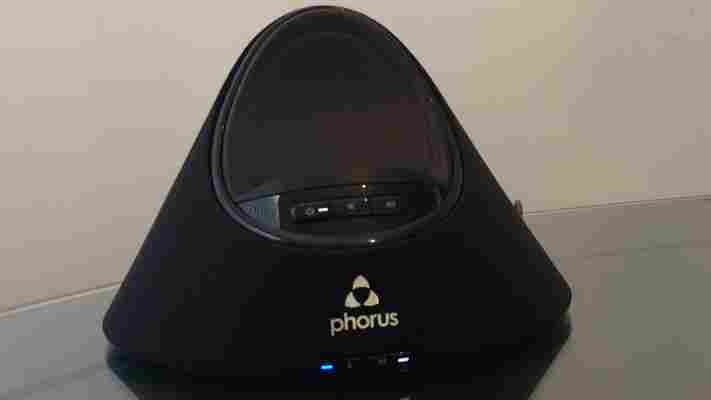2013 has been a breakthrough year for technology: Google Glass, the smartwatch, and 3-D printing all entered the tech scene and dazzled consumers.

Green technology debuts tend to fly under the radar, since they only appeal to a certain demographic. Let’s face it: bamboo keyboards and Bluetooth plant monitoring devices are not on everyone’s wish list.
None the less, there were quite a few green gadgets that made waves in 2013, many making headway in terms of solar technology uses and energy conservation. Here are a few highlights. Click here to view them all on one page.
As those on the east coast know from Hurricane Sandy’s power outage last year, it’s always a good idea to have a back-up generator (and while we’re on the topic, a 5-gallon gas can). Traditional gas-powered generators are cumbersome, noisy, and emit toxic fumes—not ideal for indoor use or at a campsite.
Enter the Yeti 150. Goal Zero’s Solar Power Generato r can “power lights, laptops and more via built-in AC, 12V and USB ports. The Goal Zero Yeti 150 can be fully charged by the sun in 15 hours with the included 15W Bolder 15 Solar Panel.” Plus, it has the same name as the abominable snowman. Sold.
As can be expected, Belkin is on the forefront of energy-monitoring device development. Back in 2010 Belkin announced the launch of its Conserve sockets , intelligent plugs which automatically shut down the power supply when a USB-connected device is fully charged. This year Belkin announced the WeMo insight Switch , which takes power conservation a step further.
Taking a cue from smart home technology, the compact plug allows users “to control and manage the energy usage and costs of home electronics from anywhere through their iOS or Android device.” You can also put your devices on a schedule and receive notifications when a connected unit is turned on or off—such as when a laundry cycle is finished.
If you’ve ever watched your phone battery reach its final stages of life as you desperately try to make last minute plans or find your way home via GPS, you understand the value of always having a way to stay charged and connected.
Mophie’s battery case provides iPhone 5 or 5s owners with up to 80 percent more battery life , without the bulk of most other battery cases. And, it comes in seven different colors. Let your 14-year-old, Nokia-faceplate-obsessed-self be free!
Perhaps the most, er, unique, use of Bluetooth that we’ve ever seen, Parrot’s Flower Power monitor is a wireless sensor that you stake into your garden or flower pot. The device sends wireless signals to an app on your smart phone with info and recommendations about soil conditions, sunlight, fertilizer, and air temperature. You can move the device to all different plants, including your lawn. Perfect for those of us with a black thumb.
Personal computing accessories like keyboards, mice, and earphones are rarely seen as a threat to the environment, yet their man-made components can take a toll— Ewaste now makes up 2 percent of landfill trash, but 70 percent of overall toxic waste. That’s why Impecca launched its Bluetooth Bamboo Keyboard , compatible with iPads, iPhones, Android Tablets, Netbooks and other Bluetooth-enabled mobile devices.
The bamboo is biodegradable, and has a finish which prevents from wear over time. Bamboo mice and earphones have been on the market for awhile now, and are an eco-friendly (and stylish!) alternative to their plastic counterparts.
Coffee lovers, rejoice. There’s alternative to single-serve coffee makers like the Keurig, and it’s environmentally friendly.
Sowden’s SoftBrew has a “back to basics” approach to brewing coffee, using a porcelain pot and hot water. The SoftBrew reduces the amount of coffee grounds used, eliminates the need for a daily paper filer, stays hot longer than glass or steel, and the filter and packaging is all recyclable.
As ThinkGeek smartly points out, when the zombie apocalypse comes, you’re going to need a good bag to carry all your stuff and an alternate power source. Thankfully, 2013 brought you the Birksun 6 Watt Solar Backback. It’s got your tech backpack must-haves like a water bottle pouch, easy-access side zipper, laptop sleeve and more, plus a solar panel which can charge the average smart phone 25 percent in one hour. Oh, and it’s TSA-approved for all travel before the apocalypse. Not too shabby.
This year Waka Waka (the company with the same name as a Shakira song ) introduced its Solar Powered Lamp and Charger, which charges phones and/or shines 40 hours of light on an 8-hour solar charge. Its two functions make it a perfect fit for camping or other off-the-grid activities.
Waka Waka also has a pretty powerful mission statement : to bring electricity to the 1.3 billion people around the world without access to it. This year the launched a major initiative to send Waka Waka Powers to the Philippines after Typhoon Haiyan.
MeterPlug is an adapter which plugs in between an AC outlet and any appliance (think TV, spaces heater, washer and dryer). According to the website, it measures your energy consumption and sends that information over Bluetooth to your smart phone, where an app displays the cost of your energy used.
Some cool features include automatically turning off appliances that are on standby, turning on and off appliances depending on your proximity to them, and manually turning on or off devices within a 100 foot range. Although not technically shipping until March 2014, the MeterPlug was developed this year and due to a successful funding campaign , is now taking pre-orders.
Did we miss your favorites? Let us know in the comments below.
Phorus Play-Fi Speaker review: High-fidelity wireless audio for Android and iOS with limited options
DTS originally billed its Play-Fi lossless wireless audio standard as an Android alternative to Apple’s AirPlay. Now that Play-Fi is compatible with iOS , it’s a good time to take a look at Phorus’s PS1 Play-Fi speakers .

The Play-Fi standard has yet to receive widespread support from third-party vendors, though DTS has said that brands are planning to introduce products with the feature soon. In the meantime, DTS subsidiary Phorus has made a $199 PS1 Speaker and $149 PR1 Receiver to show off Play-Fi’s capabalities.
I’ve been testing out a pair of PS1s around the house and have enjoyed their excellent audio quality and ease of use, but a lack of support for some of the top streaming music services and occasional issues with wireless and bluetooth speaker connectivity keep me from offering a whole-hearted recommendation.
While the PS1 is intended to be used over Wi-Fi, the speaker does include Bluetooth support and a line-in audio jack. Phorus advertises AirPlay support on the website, but that integration hasn’t actually been added yet. When AirPlay does arrive, it will make the speaker a much better value for Mac and iOS users and it should cut down on some of the connectivity complications.
The top of the speaker includes a recessed rubber cradle that can hold a tablet or smartphone. The speaker comes with USB cables that you can use to charge your device. Leaving your phone on the speaker with a cable sticking out of it kind of defeats the point of a wireless setup, but I did find myself using it as a charging station on a regular basis.
With 360-degrees audio, PS1 does a great job a filling a room with sound. Being able to stream lossless audio is a nice plus, but Play-Fi’s market positioning is a bit awkward. Audiophiles seem a bit too picky to move to wireless play, while the fidelity from other wireless speakers that introduce some lossiness is still probably good enough for your average consumer. Yes, the PS1 offers a solid combination of both quality and convenience at a reasonable price, but it’s going to need more to compete with the likes of Sonos and Bose , which is readying its SoundTouch line of wireless products.
Play-Fi excels at providing a multi-room setup without breaking the bank. Once you’ve placed multiple speakers and receivers around your house, you can control them all from your smartphone. If you’re the kind of person with lots of rooms,you can organize different sets of speakers into groups for quicker access.
If you’re connected to the PS1 over Wi-Fi, you’ll have to control the speaker through the Phorus app on either iOS or Android. From Android, you can access music on your device, Pandora, Internet radio, QQ Music, KKBOX and Deezer. The iOS app had just local music and Pandora as choices.
With no Play-Fi support for services like Rdio , Spotify or iTunes Radio , I often switched to Bluetooth, but the PS1’s Bluetooth mode doesn’t include support for two of the speaker’s main features – multi-room streaming and lossless audio.
Play-Fi has a lot of potential to become one of several mainstream wireless music options, but it has work to do in the partnership department to really take off.
Wireless music setups that don’t “just work” end up canceling out the convenience that comes from getting rid of the wires. Thankfully, the PS1 is close to being seamless, but it’s also a little rough around the edges. Setup on Android is simple, but configuring the speaker from iOS requires extra steps.
One mystifying issue is the way the PS1 handles hardware and software volume controls. Once you’re connected, you have some control of the speaker’s volume from your smartphone, but if you want to increase the maximum volume, you’ll need to do so using the speaker’s physical buttons. Walking across the room to change the volume on a wireless speaker is a serious buzzkill.
Most of the time, switching back and forth between Bluetooth and Play-Fi worked with only a short delay, but communication would sometimes breakdown when trying to reconnect, leaving me to fiddle with Bluetooth settings and close and reopen apps on my Mac, iPhone, or Android device.
It’s a minor complaint, but the Phorus apps have an unappealing interface. I can live with it, but it cheapens the setup’s overall feel. The app’s user experience is also troubled. For instance, Phorus would try to find songs that weren’t actually on my iPhone and then just stall out.
If I’m being hard on the PS1 and Play-Fi, it’s because the speaker and its streaming protocol are close to working living up to their lofty promises. The PS1 has excellent sound and connects conveniently over Wi-Fi and Bluetooth, but it’s missing support for key music services and the app and overall experience still need more polish.
At $199, the PS1 has a price advantage over its competitors, but Sonos looks set to go head-to-head with its Play:1 budget speaker. When Phorus adds AirPlay and Rdio/Spotify support via Play-Fi, the PS1 will earn a strong recommendation, but for now, it’s haunted by its untapped potential.
See also: Sonos Playbar: A pricey but spectacular sound bar with audio that will blow your mind
Chinese search giant Baidu offers more entertainment options with a wireless music streaming box
Baidu may be China’s search stalwart — but it has been quietly developing various options in the entertainment industry as well.

The company already owns a Baidu Music app — which is available only within China — with several million songs within its database that have received the necessary copyrights, and synchronizes with 17 music lists including Billboard Hits and the UK chart.
Recently, Baidu released a wireless music streaming box that lets you play songs via its music app, as well as other music apps on the market — which means you can gather all your songs together wirelessly into a hub, then play them without having to access your individual apps. The wireless music streaming box can be connected to speakers as well, so it acts as a nifty add-on to consumers’ living rooms.
For just CNY99 ($16), the wireless music streaming box is a practical media hub for all your songs. It supports Airplay on iOS devices, as well as DLNA and Qplay on other devices including a series of Android smartphones. The first 20,000 units of Baidu’s music box are up for sale on e-commerce site Jingdong , as first spotted by Tech in Asia .
Last year, Baidu rolled out a series of media devices — including a HDMI TV plugin today that seems to be a clone of Google’s Chromecast, as well as a USB WiFi dongle and a wireless router.
Headline image via Liu Jin/AFP/Getty Images
